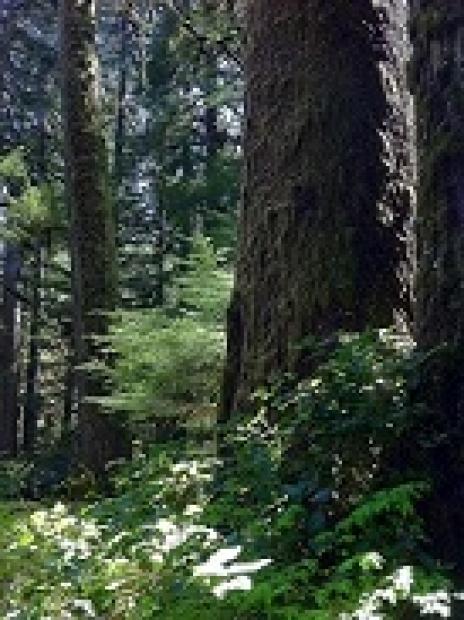The Northwest’s forests are among Earth’s greatest storage mediums for biocarbon, not only in enormous trees, but also in extraordinarily carbon-rich soils, as well as plant life in the forest understory and canopy.
Forest biocarbon solutions include:
- Protecting large, contiguous tracts of these great forests in their natural state;
- Restoring forests to lands where they’ve been lost where possible;
- Preventing any more forests from being converted to residential and commercial development; and
- Improving management of our working forest lands.

Rachel Lodge
Conservation forestry practices that shift forests from industrial monoculture and short-rotation models to longer-rotation, selective harvest, whole-system approaches deliver a spectrum of benefits such as carbon storage, richer soils, healthy wildlife, clean water and rivers that support salmon and are less prone to downstream flooding.
By capturing water and supporting higher levels of biodiversity, forest biocarbon practices can also improve the ability of the Northwest to adapt to the intensified intense heat and water cycles caused by climate change.
NBI Innovation Partners in forestry:
- Build Local Alliance
- Conservation Northwest
- Ecotrust Forest Management
- Friends of Trees
- Gifford Pinchot Task Force
- Hyla Woods
- Northwest Natural Resource Group
- Oregon Wild
- Pacific Forest Trust
- Trout Mountain Forestry
- Willamette Partnership
Resources
Reinventing Forestry: Growing Ecosystem Services
Diversifying forestry by growing carbon, water services, wildlife habitat and high-value wood products
--Patrick Mazza, Research Director, Climate Solutions (July 2010). Part of a series of briefing papers on biocarbon that focus on how the Northwest can mount regional initiatives to accelerate biocarbon progress.
Give for a brighter future
Connect
Join our email list to learn about what we do and how to get involved.